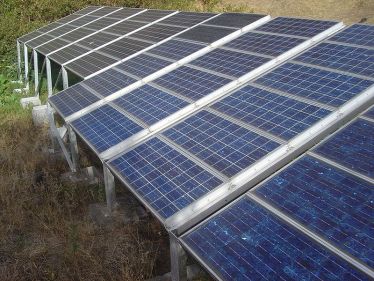A huge gain in solar cells has now been made by a team of chemists at the University of California, Riverside that has found an ingenious way to make solar energy conversion more efficient. The researchers report in Nano Letters that by combining inorganic semiconductor nanocrystals with organic molecules, they have succeeded in "up converting" photons in the visible and near-infrared regions of the solar spectrum. Christopher Bardeen and Ming Lee Tang worked with cadmium selenide and lead selenide semiconductor nanocrystals. The organic compounds they used to prepare the hybrids were diphenylanthracene and rubrene. The cadmium selenide nanocrystals could convert visible wavelengths to ultraviolet photons, while the lead selenide nanocrystals could convert near-infrared photons to visible photons.
